Sensor Sweep: Babylon-5, Beowulf, Mirkwood Manual, A. E. van Vogt
Monday , 18, September 2023 Sensor Sweep Leave a commentMyth (Dark Worlds Quarterly): Whether you call him Siegfried (in the German The Nibelungenlied) or Sigurd (the Völsunga saga, and the Poetic Edda), it doesn’t really matter. He fights the dragon Fafnir and wins. It is one of the classic myths that lies behind much of Sword & Sorcery. In the original tale, Siegfried is raised by the dwarf smith, Mime, and later slays the dragon. Bathing in its blood, he becomes impenetrable.
Fantasy (Sprague de Camp Fan): This is the third Brandon Sanderson novel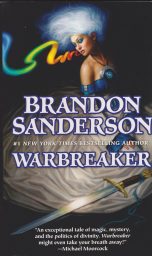 I’ve reviewed here. I feel a bit guilty (however minutely) in promoting him instead of the more struggling authors I see posting on Facebook pages that I’m a member of. But, dammit, Warbreaker is a great read and REH fans need to know that!
I’ve reviewed here. I feel a bit guilty (however minutely) in promoting him instead of the more struggling authors I see posting on Facebook pages that I’m a member of. But, dammit, Warbreaker is a great read and REH fans need to know that!
Weird Tales (Tellers of Weird Tales): Although he did not receive credit in the table of contents, Clark Ashton Smith had, in the issue of July/August 1923, the first verse in Weird Tales. The first of his two poems in that issue is entitled “The Red Moon.” You will find it on page 48.
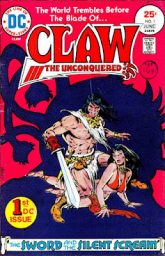 Comic Books (Paperbook Warrior): With the success of Conan on the pages of Marvel, DC Comics became busy creating sword-and-sorcery titles that would compete in the hectic heroic-fantasy realm. In 1975, the company launched their creations, eight new titles that featured scantily-clad heroes holding sharp, gleaming swords. These books were Warlord, Beowulf, Dragon Slayer, Tor, Nightmaster, Starfire, Stalker, and today’s topic, Claw the Unconquered.
Comic Books (Paperbook Warrior): With the success of Conan on the pages of Marvel, DC Comics became busy creating sword-and-sorcery titles that would compete in the hectic heroic-fantasy realm. In 1975, the company launched their creations, eight new titles that featured scantily-clad heroes holding sharp, gleaming swords. These books were Warlord, Beowulf, Dragon Slayer, Tor, Nightmaster, Starfire, Stalker, and today’s topic, Claw the Unconquered.
H. P. Lovecraft (Goodman Games): Gary Gygax named H. P. Lovecraft as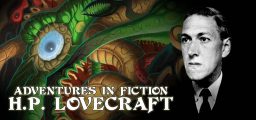 one of the immediate influences in the Dungeon Masters Guide’s Appendix N. Lovecraft is best known for the creation of the alien god, Cthulhu, from the short story “The Call of Cthulhu” published in Weird Tales in 1928 (and be sure to check out our collection of reprints featuring Lovecraft’s works).
one of the immediate influences in the Dungeon Masters Guide’s Appendix N. Lovecraft is best known for the creation of the alien god, Cthulhu, from the short story “The Call of Cthulhu” published in Weird Tales in 1928 (and be sure to check out our collection of reprints featuring Lovecraft’s works).
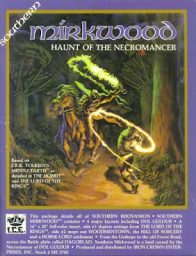 RPG (Grognardia): The series of Middle-earth sourcebooks published by Iron Crown Enterprises during the early 1980s occupy a strange place in my personal history as a roleplayer. Like nearly every other gamer I knew at the time, I had, of course, read the works of J.R.R. Tolkien and I liked them well enough, though I’m not sure I’d have called myself a huge fan of them.
RPG (Grognardia): The series of Middle-earth sourcebooks published by Iron Crown Enterprises during the early 1980s occupy a strange place in my personal history as a roleplayer. Like nearly every other gamer I knew at the time, I had, of course, read the works of J.R.R. Tolkien and I liked them well enough, though I’m not sure I’d have called myself a huge fan of them.
Gaming (Bounding Into Comics): YouTuber, political commentator, and former political candidate Sargon of Akkad a.k.a Carl Benjamin recently explained why he believes gamers are rejecting Starfield over the inclusion of forced pronoun usage in the game’s character creator.
Star Wars (Nerdrotic): Star HERS: The HER to The Empire Review. Ahsoka is a 501st wave feminist borefest. Star Wars can’t be saved. Disney Star Wars is a zombie franchise that has long since completed the destruction of George Lucas’ legacy. Now it’s time for Disney Lucasfilm to replace Luke Skywalker.
Tolkien (Libery Fund): Among the many works that influenced and shaped J.R.R Tolkien’s Middle Earth, none is more evident than Beowulf. This 10th Century Anglo-Saxon poem speaks of mighty kings, demonic beasts, and dragon-slaying heroes. One such hero is Beowulf. The tale of his encounter with a dragon shares many characteristics with Tolkien’s The Hobbit and the adventure that Bilbo, Thorin, and Company have with Smaug the dragon.
Games (Rageaholic): Of Pronouns and Planetoids: A StarField Rant.
Science Fiction (Wert Zone): Seminal epic space opera show Babylon 5 is to finally get a release on Blu-Ray, after many, many years of campaigning by fans. The set will be released on 5 December this year in the USA, UK and some other territories.
release on Blu-Ray, after many, many years of campaigning by fans. The set will be released on 5 December this year in the USA, UK and some other territories.
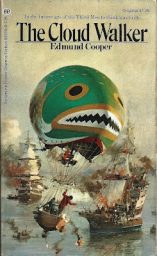 Science Fiction (Por Por Books): The Top 10 Science Fiction Novels of the Seventies. I’ve been writing this blog for nearly 15 years, and so I think I’ve accumulated sufficient experience with the literature to display my egomania, and stand forth with my top 10 science fiction novels of the decade from 1970 to 1979.
Science Fiction (Por Por Books): The Top 10 Science Fiction Novels of the Seventies. I’ve been writing this blog for nearly 15 years, and so I think I’ve accumulated sufficient experience with the literature to display my egomania, and stand forth with my top 10 science fiction novels of the decade from 1970 to 1979.
Science Fiction (M Porcius): The topic of this and the next transmission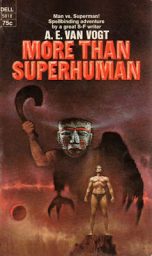 from MPorcius HQ will be the 1971 Dell paperback printing of A. E. van Vogt’s More Than Superhuman, a collection of five reprinted 1960s stories and one new story. My copy has an awesome moody cover featuring an heroic muscleman–no doubt a symbol of man’s ability to contend with anything the universe can throw at him.
from MPorcius HQ will be the 1971 Dell paperback printing of A. E. van Vogt’s More Than Superhuman, a collection of five reprinted 1960s stories and one new story. My copy has an awesome moody cover featuring an heroic muscleman–no doubt a symbol of man’s ability to contend with anything the universe can throw at him.
 Science Fiction (Vintage Pop Fictions): The Invaders is a 1953 novella (at a stretch you could call it a short novel) by Murray Leinster (1896-1975). Leinster is a science fiction writer who deserves a lot more attention. The Invaders is (obviously) an alien invasion story. This was 1953, with the UFO craze getting into top gear, and the saucer-shaped alien spacecraft are clearly an attempt to cash in on this. It’s also a story with obvious resemblances to Invasion of the Body Snatchers and Robert A. Heinlein’s The Puppet Masters.
Science Fiction (Vintage Pop Fictions): The Invaders is a 1953 novella (at a stretch you could call it a short novel) by Murray Leinster (1896-1975). Leinster is a science fiction writer who deserves a lot more attention. The Invaders is (obviously) an alien invasion story. This was 1953, with the UFO craze getting into top gear, and the saucer-shaped alien spacecraft are clearly an attempt to cash in on this. It’s also a story with obvious resemblances to Invasion of the Body Snatchers and Robert A. Heinlein’s The Puppet Masters.
Science Fiction (Fantasy Literature): The book that I am leading up to here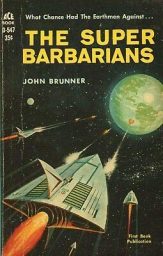 is John Brunner’s The Super Barbarians, which was released as a 35-cent Ace paperback (D-547, for all you collectors out there) in 1962, when the author was 28. The book sports a somewhat unfaithful, non sequitur cover courtesy of Ed Valigursky. Sadly, the novel has not been reprinted in the 61 years (as of this writing) since its initial publication.
is John Brunner’s The Super Barbarians, which was released as a 35-cent Ace paperback (D-547, for all you collectors out there) in 1962, when the author was 28. The book sports a somewhat unfaithful, non sequitur cover courtesy of Ed Valigursky. Sadly, the novel has not been reprinted in the 61 years (as of this writing) since its initial publication.
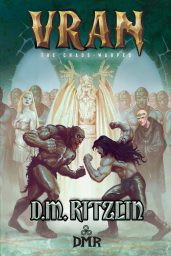 New (DMR Books): The release of my first sword-and-sorcery novel, Vran the Chaos-Warped, is still about a month away, but today I’m proud to reveal the cover art:
New (DMR Books): The release of my first sword-and-sorcery novel, Vran the Chaos-Warped, is still about a month away, but today I’m proud to reveal the cover art:
RPG (Grumpy Wizard): One of the most puzzling criticisms of sandbox campaigns I’ve seen is that players don’t engage with the hooks and their characters hang out in town. A large part of that is on the referee. The game master may need to create better hooks, create interesting adventure locations, and reward players who go exploring by revealing secrets embedded in the setting.
James Bond (Bounding Into Comics): The latest James Bond novel, On His Majesty’s Secret Service, by Charlie Higson which arrived on bookshelves back in May features white men who oppose wokeness as the villains. In the book’s official synopsis, it shares, “It is the 4th of May, two days before the Coronation of King Charles III and the world’s favourite spy has his work cut out for him.”
Majesty’s Secret Service, by Charlie Higson which arrived on bookshelves back in May features white men who oppose wokeness as the villains. In the book’s official synopsis, it shares, “It is the 4th of May, two days before the Coronation of King Charles III and the world’s favourite spy has his work cut out for him.”
Science Fiction (Paperback Palette): ARTIFICIAL INTELLIGENCE will bring about the demise of the human race. From what I’ve read about AI, that grim development would seem to be a foregone conclusion, particularly if AI continues to go unchecked and ungoverned like it is. Of course, a nuclear war or a super-virus or a giant asteroid slamming into earth could also bring about humanity’s annihilation, but AI poses a more realistic threat in my estimation, a threat we may not be able, or even willing, to thwart.
Appendix N (Goodman Games): This earlier catalog was the Ballantine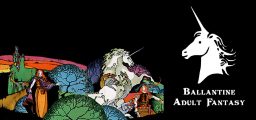 Adult Fantasy Series. Edited by Lin Carter, an esteemed author of science fiction and fantasy in his own right, this literary series was comprised of more than sixty titles released between 1969 and 1974 by Ballantine Books. It brought to light both new authors and revived older works from the dustbin of history, exposing fantasy fiction to new audiences in both the United States and abroad. But before examining the works comprising the Ballantine Adult Fantasy Series, a little background history must be explored.
Adult Fantasy Series. Edited by Lin Carter, an esteemed author of science fiction and fantasy in his own right, this literary series was comprised of more than sixty titles released between 1969 and 1974 by Ballantine Books. It brought to light both new authors and revived older works from the dustbin of history, exposing fantasy fiction to new audiences in both the United States and abroad. But before examining the works comprising the Ballantine Adult Fantasy Series, a little background history must be explored.
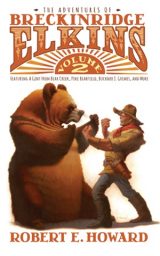 Robert E. Howard (Black Gate): I thought I would write on Howard’s humorous pulp Western characters. They are not particular favorites of Bob’s (shocking!), so he probably won’t be writing about them for this series any time too soon. Also, this summer is the 90th anniversary of the creation of Breckinridge Elkins, one of Howard’s best-selling characters during his life. ns of the West.
Robert E. Howard (Black Gate): I thought I would write on Howard’s humorous pulp Western characters. They are not particular favorites of Bob’s (shocking!), so he probably won’t be writing about them for this series any time too soon. Also, this summer is the 90th anniversary of the creation of Breckinridge Elkins, one of Howard’s best-selling characters during his life. ns of the West.
Comic Books (Rough Edges): Kubert illustrated a long graphic novel about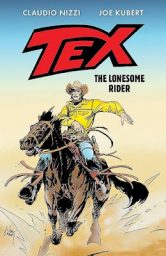 Tex Willer, a Western hero who’s been appearing in Italian comics for more than fifty years. TEX: THE LONESOME RIDER is one of the few Tex Willer stories that’s available in English.
Tex Willer, a Western hero who’s been appearing in Italian comics for more than fifty years. TEX: THE LONESOME RIDER is one of the few Tex Willer stories that’s available in English.
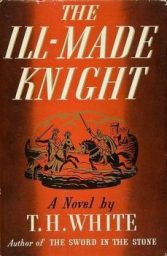 Fantasy (Black Gate): The first two volumes, The Sword in the Stone (1938) and The Queen of Air and Darkness (1939), of T.H. White’s The Once and Future King focus on the rise of Arthur Pendragon and the foundation of his kingdom, where right, not might, is the rule. The following two volumes, The Ill-Made Knight (1940) and The Candle in the Wind (1958), tell the story of Lancelot and Guenever’s affair and subsequent rot and collapse of the Round Table and Arthur’s kingdom.
Fantasy (Black Gate): The first two volumes, The Sword in the Stone (1938) and The Queen of Air and Darkness (1939), of T.H. White’s The Once and Future King focus on the rise of Arthur Pendragon and the foundation of his kingdom, where right, not might, is the rule. The following two volumes, The Ill-Made Knight (1940) and The Candle in the Wind (1958), tell the story of Lancelot and Guenever’s affair and subsequent rot and collapse of the Round Table and Arthur’s kingdom.
Review (DMR Books): J. Manfred Weichsel is an author that I was wholly unfamiliar with before reading this collection. He has numerous titles available from Amazon and he is a regular contributor to Cirsova Magazine. I believe his bio on Amazon sums up his writing perfectly: J. Manfred Weichsel writes extravaganzas that fuse adventure, horror, science fiction, and fantasy into some of the most original subversive literature being published today.
Warhammer (Track of Words): Welcome to Where to Start with Black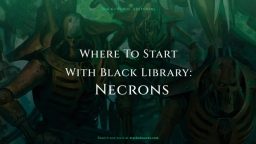 Library: Necrons, in which I offer up some suggestions for which Black Library stories to read if you’re particularly interested in the deathless legions of the Necrons. The expansive nature of the worlds of Warhammer can be both a strength and a weakness – there’s loads to explore, but it’s hard to know where to look and where to begin.
Library: Necrons, in which I offer up some suggestions for which Black Library stories to read if you’re particularly interested in the deathless legions of the Necrons. The expansive nature of the worlds of Warhammer can be both a strength and a weakness – there’s loads to explore, but it’s hard to know where to look and where to begin.
Please give us your valuable comment